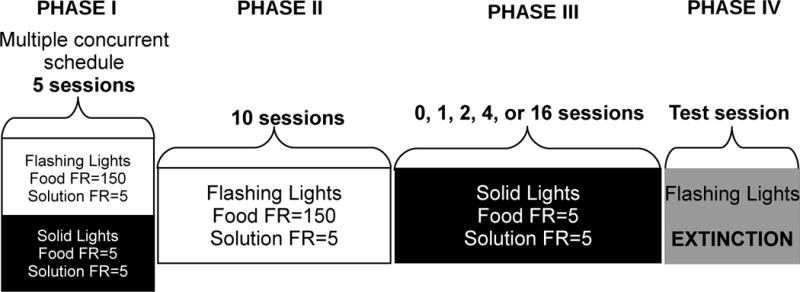Figure 1.

Experimental design. The design of the study included at least 5 days of training under the multiple concurrent schedule (Phase I) in which conditions alternated within the session between a response requirement for food of 150 and the associated flashing stimulus lights and a response requirement for food of 5 and the associated solid stimulus lights. The response requirement for ethanol or saccharin solution was always 5. Phase I was followed by Phase II in which only flashing lights signaling a response requirement of 150 for food were presented for 10 consecutive sessions. This was followed Phase III in which only solid lights signaling a response requirement for food of 5 were present for varying numbers of sessions. Finally, during the Phase IV session, flashing stimulus lights were presented, but responses did not result in delivery of food or the solution. These four phases were repeated for each subject so that each subject was exposed to each number of intervening sessions listed for Phase III.
